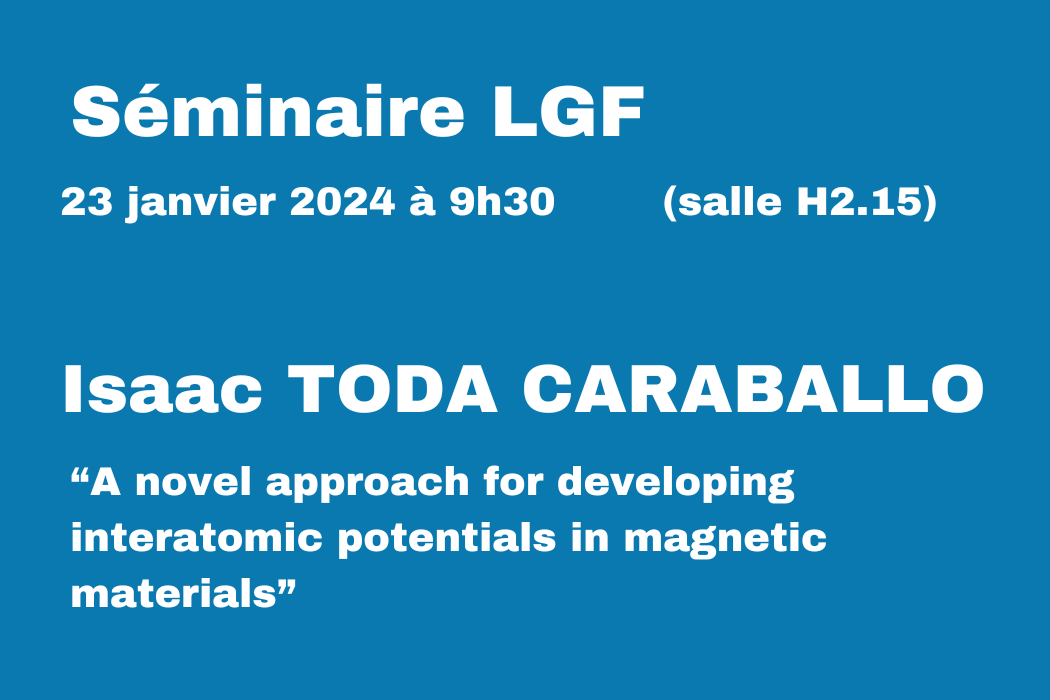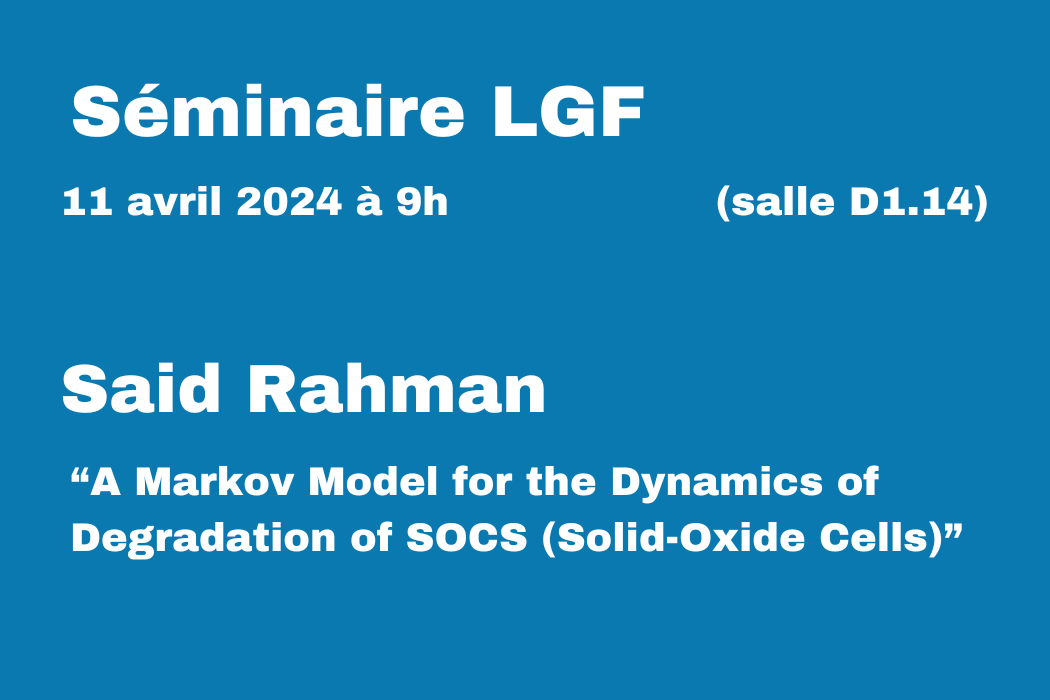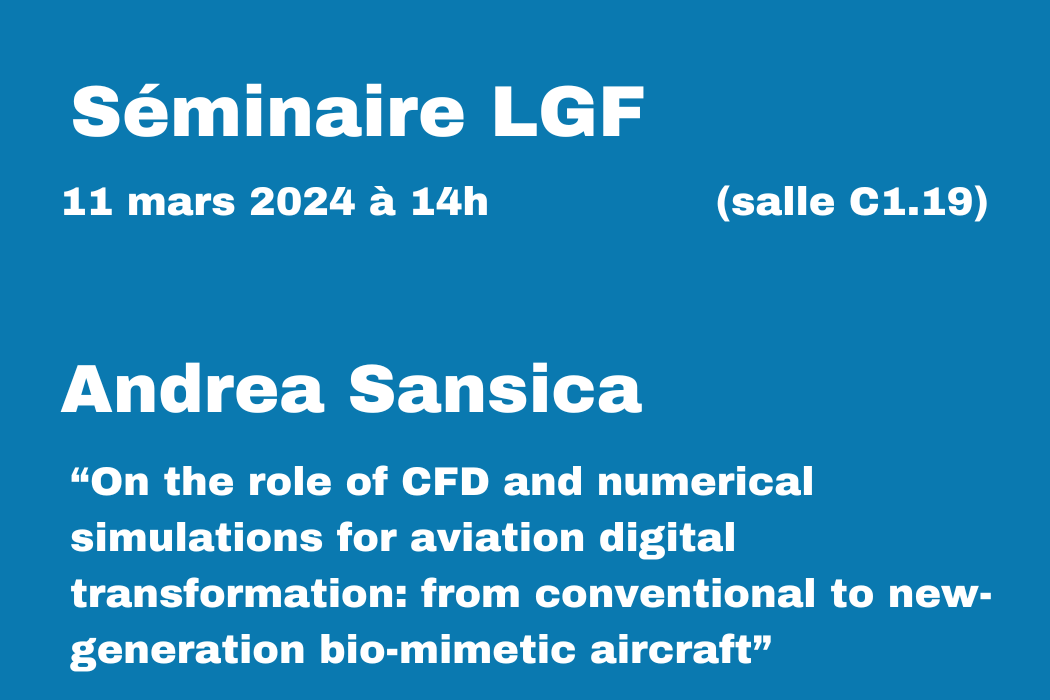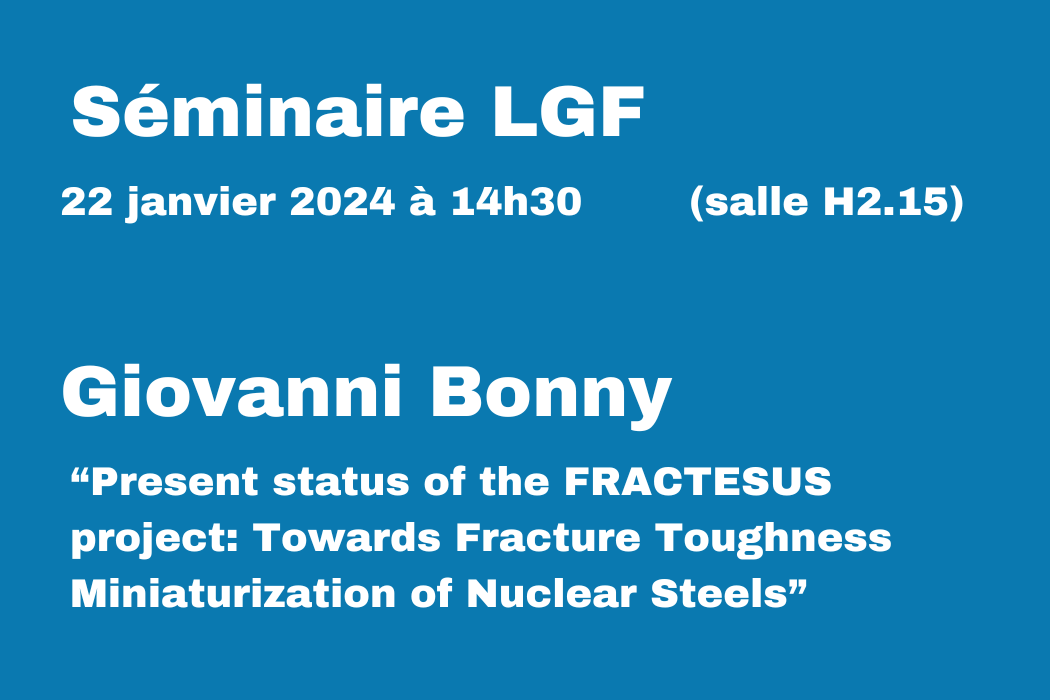Intitulé A Markov Model for the Dynamics of Degradation of SOCS (Solid-Oxide Cells) Résumé Ce…
Séminaire LGF – Isaac TODA CARABALLO (CENIM-CSIC (Materalia-Steel Group), Espagne) – 23 janvier 2024

Isaac TODA CARABALLO (CENIM-CSIC (Materalia-Steel Group), Espagne) délivrera le séminaire suivant.
Intitulé
A novel approach for developing interatomic potentials in magnetic materials
Résumé
The use of atomistic simulations is extremely helpful in analysing the thermodynamics in metallic systems. DFT-based methods provide a powerful tool to describe phase stability, enthalpy and/or magnetic configurations, but are constrained to small systems due to a large computational cost. A proper treatment of the magnetic interactions is needed, since the magnetism is of paramount importance for the microstructural stability, especially in steels and high-entropy alloys containing magnetic elements. These magnetic interactions control the defects behaviour which affects the mechanical properties and the response under irradiation. Current interatomic potentials for molecular dynamics (MD) simulations still lack an adequate and general formulation to include magnetism into the simulations.
In this work, the universal equation of states (UES) is revisited and generalized by including ferromagnetic (FM) and antiferromagnetic (AFM) configurations with the aim of proposing a new formulation to develop interatomic potentials with magnetic contribution. A large database with around 100000 spin polarized density functional theory (DFT) calculated energies for different lattices, volumes, and magnetic moments for Fe, Ni, Co, Cr and Mn elements has been developed. This has allowed to propose a Generalized UES (GUES), which has been seen to correctly account for all DFT data generated, therefore paving the way to develop interatomic potentials with magnetic contribution. Based on this, a first magnetic interatomic potential for the case of Fe is proposed and tested in other crystal lattices (A15 and C15), elastic constants, stresses in the lattice, vacancies, interstitials, forces at different temperatures, transformation paths between body-centered cubic, face-centered cubic, hexagonal close-packed, and simple cubic structures as well as γ-surfaces.



